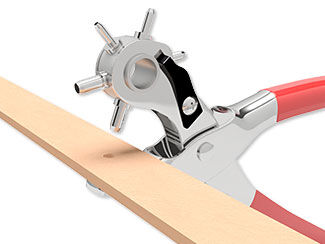How to Use the Rotary Hole Punch Tool
Hand-held rotary punch is ideal for leather work—and this silent animation shows how to use it. Also includes full written step-by-step instructions below the video.


